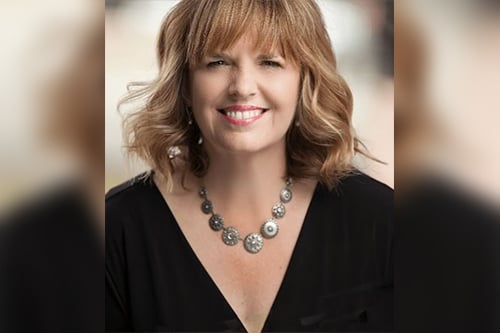

With close to 700 million members, LinkedIn is one social network that insurance professionals need to actively be a part of, though there are key tricks for successfully building a brand, developing powerful relationships, and standing out from the competition on this platform.
“When it comes to insurance professionals, building trust is key,” said Shelly Elsliger (pictured), LinkedIn trainer and president of Linked-Express, and one of the leaders taking part in Insurance Business America’s Women in Insurance virtual events in New York and Chicago in September 2020. “The story that we build and how we allow users of LinkedIn to read our story is going to make a big difference in how we relate to people. When we create a story that is more human-based and more based around relationship building, it allows us to really reach people.”
One no-no is using salesy tactics on LinkedIn, which don’t necessarily resonate with other users. In fact, this type of approach can nip a blossoming relationship in the bud. Instead, Elsliger recommends that professionals personalize their LinkedIn content to reflect what they bring to the table as professionals, but also as people. One example is making a LinkedIn profile only about a professional’s position at their company, whereas they should also include other details to showcase the person behind the job title.
“There are certain things that you can do within your LinkedIn story to really make your background, your profession, your credentials, your attributes, and your personality come to life,” said Elsliger. “That story is key in establishing your brand and personality, and also building trust right from the get-go.”
Another way to personalize your identity on LinkedIn involves changing out default features, such as the background photo. That background was meant to be customized, allowing users to include text, show off their association with their company, or show themselves in action, noted Elsliger.
Personalization is likewise critical when connecting with other individuals on LinkedIn. Elsliger recommends that professionals send a unique text along with an invite to connect, instead of simply just hitting the connect button.
How a professional crafts their newsfeed and creates posts on LinkedIn can also be customized to drive engagement. A lot of people create content and share it without including their opinion or asking people to become engaged by, for instance, including a poll or asking a question.
“All of these different ways of communicating with people allows them to be involved with you as a professional,” explained Elsliger. “It’s taking people into consideration, and creating dialogue and interactions, which makes a difference.”
During the upcoming Women in Insurance virtual summits, Elsliger will deliver a keynote on “Approaching LinkedIn with a Strategy and the Gift of Social Reciprocity,” where she will delve deeper into the do’s and do-not-do’s of this platform, as well as the importance of social reciprocity to earn trust and how to gain credibility through thought leadership on LinkedIn.
In the meantime, she has one more tip for insurance professionals, which is to use testimonials and endorsements to their advantage on the social media platform.
“If you’re connected to a company page, there can be testimonials via that page that associate you directly with the company that you are working for,” explained Elsliger. “There are also endorsements, which is how people recognize the skills that you have. I work with a lot of different professionals and I tell them to reach out to people – every time you work with a client and they’ve had a really great working relationship with you, ask them to endorse you and then you endorse them [in return]. That’s part of social reciprocity, which is key to building relationships and having success on LinkedIn.”
To learn more about approaching LinkedIn with a strategy, register for Women in Insurance Chicago on September 03 and New York on September 09.
